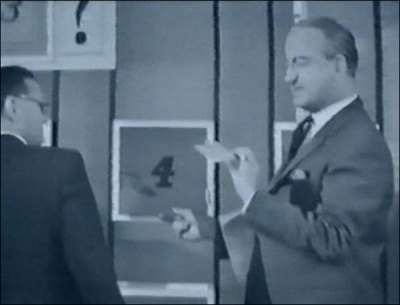Stupid Question, Cabinet Impedance
Moderated By: mods
-
mezzio13
- GOODmin
- Posts: 14632
- Joined: Thu Apr 20, 2006 3:20 am
- Location: Center of the Universe
- Contact:
Stupid Question, Cabinet Impedance
So I haven't used my Carvin Cab in years. I can't remember what impedance it was/is. I metered it across the jack, and it came up as 2ohm. It should be 4, 8, or 16. This matters a bit, since the head has a selector to match what impedance the cab is at. Anyone suggestions?
- laterallateral
- Traynor or Death
- Posts: 5950
- Joined: Wed Jan 16, 2008 12:15 am
- Location: Montery Howl
I've never come across guitar cabs that presented that low a load but I know that some bass cabs do come in 2ohm flavours.
Do you remember which head you used to run it with and what the impedance ratings for it were?
It's also possible that some of the speakers in your cab are disconnected, explaining the weird load. Example: if you had 4 drivers at 4ohms each, connected in serial pairs of 8ohms with both of these pairs connected in parallel for a total 4ohm load, should one of the speakers in each serial pair be disconnected, that would leave you with two 4ohm drivers in parallel for a total 2ohm load on your cab.
....I think.
Do you remember which head you used to run it with and what the impedance ratings for it were?
It's also possible that some of the speakers in your cab are disconnected, explaining the weird load. Example: if you had 4 drivers at 4ohms each, connected in serial pairs of 8ohms with both of these pairs connected in parallel for a total 4ohm load, should one of the speakers in each serial pair be disconnected, that would leave you with two 4ohm drivers in parallel for a total 2ohm load on your cab.
....I think.
Any disconnection would increase the impedance. Only a short will reduce the impedance. DC resistance is going to be lower than the rated impedance, around 3 ohms DC resistance is quite typical for 4 ohm speakers.laterallateral wrote:It's also possible that some of the speakers in your cab are disconnected, explaining the weird load. Example: if you had 4 drivers at 4ohms each, connected in serial pairs of 8ohms with both of these pairs connected in parallel for a total 4ohm load, should one of the speakers in each serial pair be disconnected, that would leave you with two 4ohm drivers in parallel for a total 2ohm load on your cab.
....I think.
Open the box!

-
mezzio13
- GOODmin
- Posts: 14632
- Joined: Thu Apr 20, 2006 3:20 am
- Location: Center of the Universe
- Contact:
OK, checked all the wiring and there is continuity all through out. I metered all of the speakers, and here is where things start getting weird. They are all (old) 16ohm Celestions, but they all read for 12ohm when I put the meter across them. I'm wondering if the speaker is oscillating a wee bit because of the voltage in the meter. I don't really know of speakers all depleting at the same rate over time (they're not radioactive).
In any case I rewired everything in parallel for a 4ohm cabinet, and with (4) speakers in parallel at 12ohm each I should get about 3ohm. I was reading 2 and change, which is acceptable as far as the real circuit is concerned. I'm really puzzled about the 12 vs 16ohm deal though.
Also, I was reading a copy of the owners manual on line and the instructions for connecting two cabs, and they said for two 16ohm cabs, select 8ohms on the head. for two 8ohm cabs, use 4 on the head, and for two 4ohm cabs also select 4ohms on the head, despite the fact that you'd be running @ 2ohms. So i think the head can handle running at an off load, without much hassle. Any thoughts.
In any case I rewired everything in parallel for a 4ohm cabinet, and with (4) speakers in parallel at 12ohm each I should get about 3ohm. I was reading 2 and change, which is acceptable as far as the real circuit is concerned. I'm really puzzled about the 12 vs 16ohm deal though.
Also, I was reading a copy of the owners manual on line and the instructions for connecting two cabs, and they said for two 16ohm cabs, select 8ohms on the head. for two 8ohm cabs, use 4 on the head, and for two 4ohm cabs also select 4ohms on the head, despite the fact that you'd be running @ 2ohms. So i think the head can handle running at an off load, without much hassle. Any thoughts.
What was full range on your meter when you were measuring it?
The 12 ohms DC resistance vs 16 ohms impedance ties up well enough with the figures I quoted earlier (3 ohms DC resistance vs 4 ohms impedance), that's entirely to be expected. What's a little odd is that I'd expect all 4 in parallel to read 3 ohms and your meter is showing 2 - but depending on your meter that could be within the accuracy of the meter.
Running the 2x 4 ohm cabs from a 4 ohm output; valve amps cope with lower-than-rated loads better than solid state.
The 12 ohms DC resistance vs 16 ohms impedance ties up well enough with the figures I quoted earlier (3 ohms DC resistance vs 4 ohms impedance), that's entirely to be expected. What's a little odd is that I'd expect all 4 in parallel to read 3 ohms and your meter is showing 2 - but depending on your meter that could be within the accuracy of the meter.
Running the 2x 4 ohm cabs from a 4 ohm output; valve amps cope with lower-than-rated loads better than solid state.

